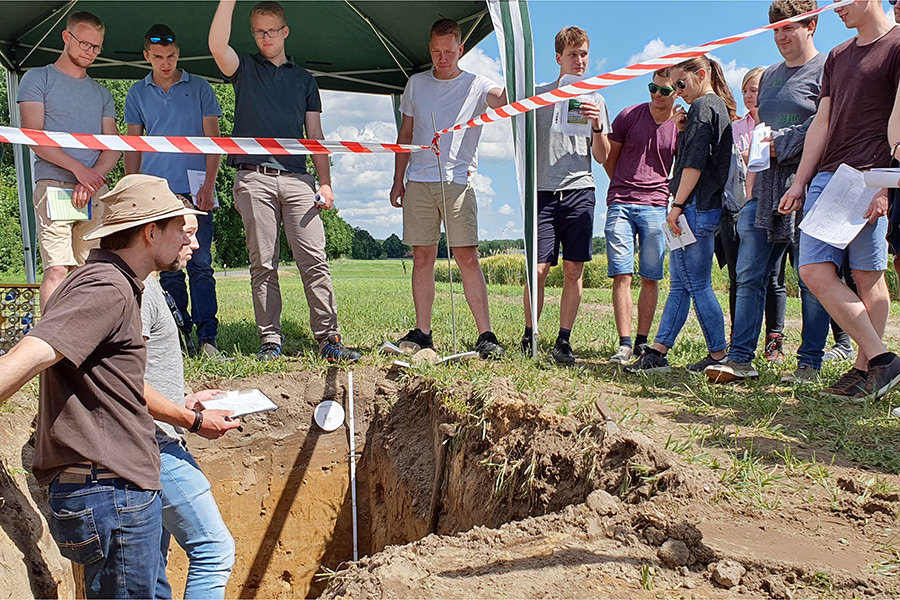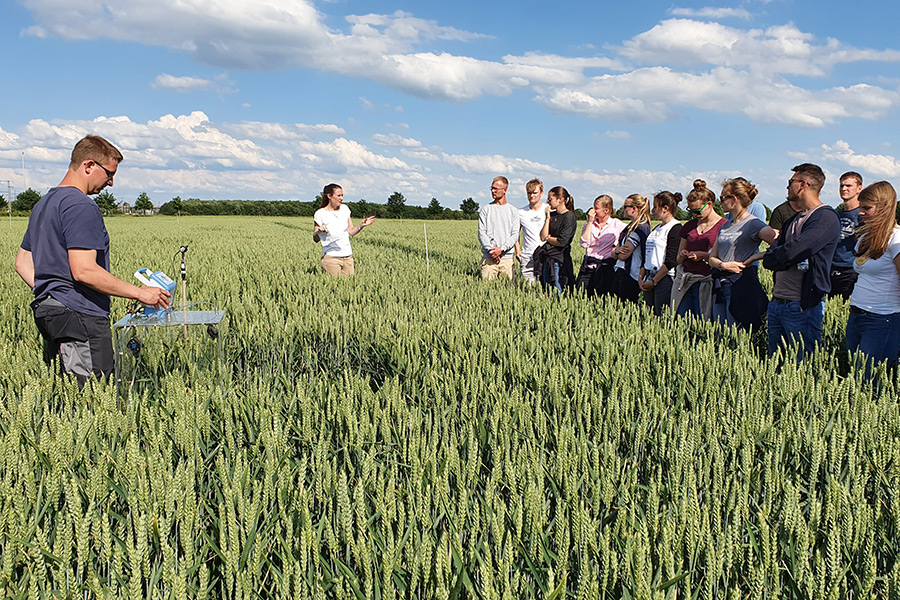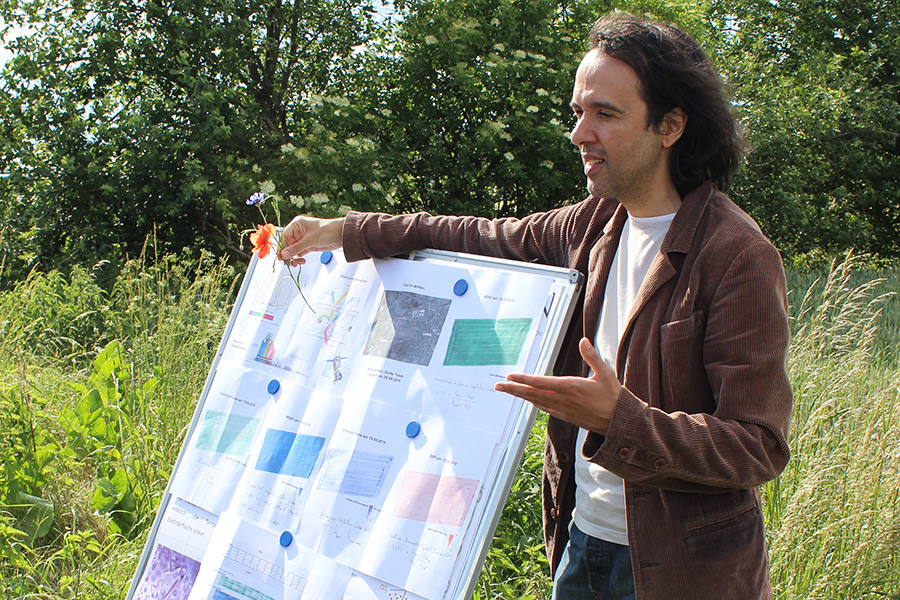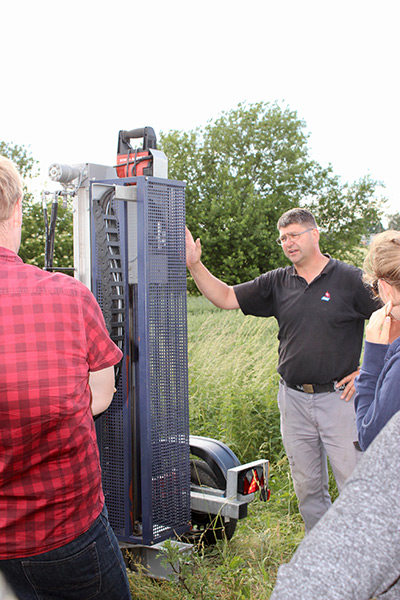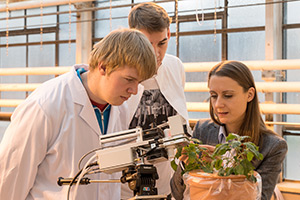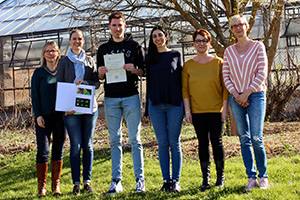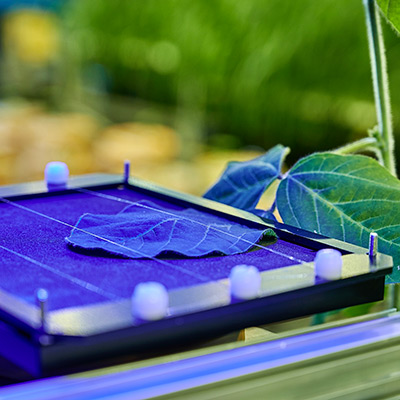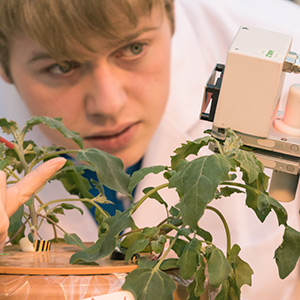Teaching
Field Trip on Plant Nutrition Research and Fertilization
On June 12th and 13th 2019, Professor Dr. Klaus Dittert led a field trip on plant nutrition research and fertilization. About 30 students of the Division of Plant Nutrition and Crop
Physiology at the University of Göttingen took part. Junior Professor Dr. Merle Tränkner and Dr. Paulo Cabrita joined for explaining about the IAPN field trial in Ahlten.
The excursion started with a visit of the research station Hanninghof of the fertilizer company Yara in Dülmen, where the participants were introduced to different research projects. Focus of these projects
is the development of innovative fertilization systems with special regard to the improvement of water and nitrogen-use efficiency while simultaneously protecting the environment through sustainable agricultural
practices.
Fertilization, ground water protection, and resource efficient watering systems
(Photo: Dittert)
First station on June 13th was the Field Day in Hamerstorf, near Uelzen, organized by the Chamber of Agriculture of Lower Saxony. Here, students learned especially about ground water protection-oriented crop rotations. Additionally, soil scientists of the Chamber of Agriculture discussed the special properties of the dominant sandy soil in this region based on a c. 1.5 m depth soil profile. Also, concepts of water-saving irrigation systems and their interaction with plant nutrient efficiency were reflected.
IAPN field trial in Ahlten
Afterwards, the group visited the IAPN field trial in Ahlten, close to Hannover, and the students got insights into how plant physiological measurements are done in the field. The field trial focused on wheat which received different Mg fertilizer treatments. The aim was to study changes in the photosynthetic capacity, pigment composition and water-use efficiency due to different Mg soil concentrations. Before measurements were shown in the field, Merle Tränkner and Paulo Cabrita explained the background of the experiment and the related plant physiological processes.
(Photo: Dittert)
In the field, the IAPN’s Master student Christian Elm demonstrated how photosynthetic gas exchange on a leaf and of the entire plant canopy is measured. He currently prepares his Master’s thesis on data obtained in the field.
Remote sensing via satellite
(Photo: Tränkner)
IAPN scientist Paulo Cabrita explained which pigments are present in plants such as the red poppy in his hand. Also, he presented results obtained from satellite images of the field which show different vegetation indices such as Chlorophyll Index. He introduced how the technology of “Remote Sensing” including satellites can contribute to evaluate plant stresses in the field.
Soil sampling with a hydraulically operated trailer
The field manager of K+S, Thorsten Hanebut, assisted the IAPN team in the field trial by managing the agronomic practices such as plot preparation, fertilizer application and harvest.
On the day of excursion, he demonstrated soil sampling with a hydraulically operated trailer. In contrast to the manual soil sampling, the hydraulic soil sampler allows obtaining soil samples easily and fast down
to soil depths of up to 90 cm which is very important for larger experimental set-ups and samplings during summer when soils are dry.
“It was a very successful excursion and the students were pleased with the wealth of interesting subjects and methods”, says Klaus Dittert. And Merle Tränkner adds: “I enjoyed to show to the students how science
can be conducted in the field.”
Related




